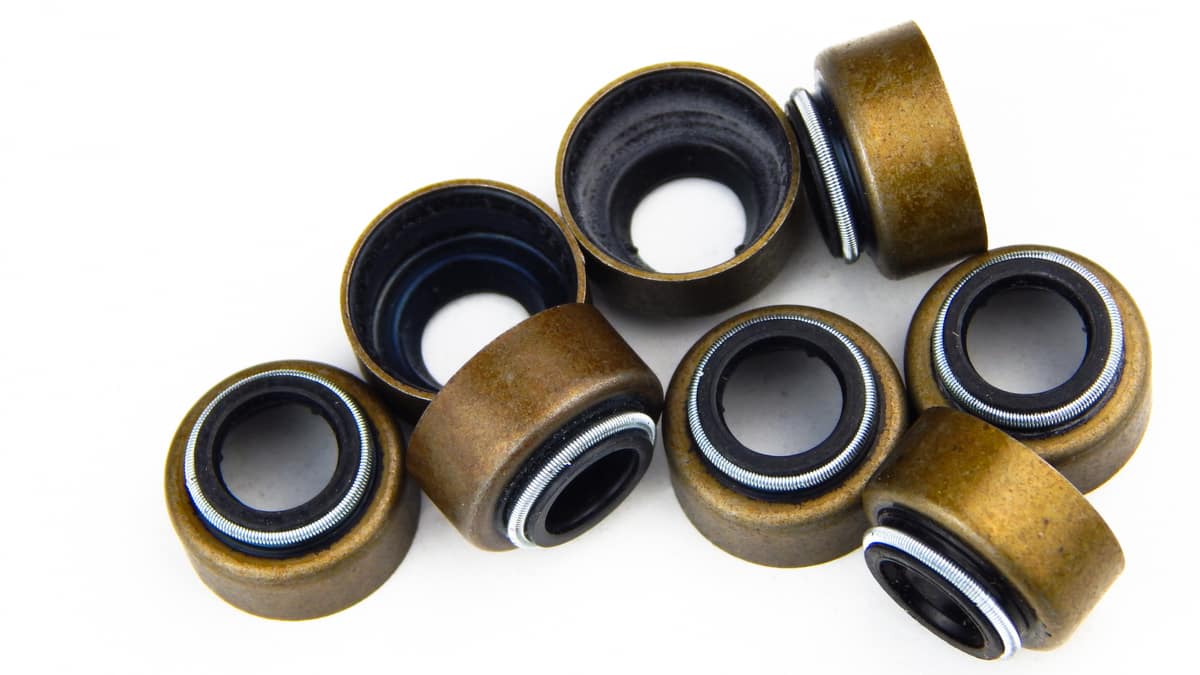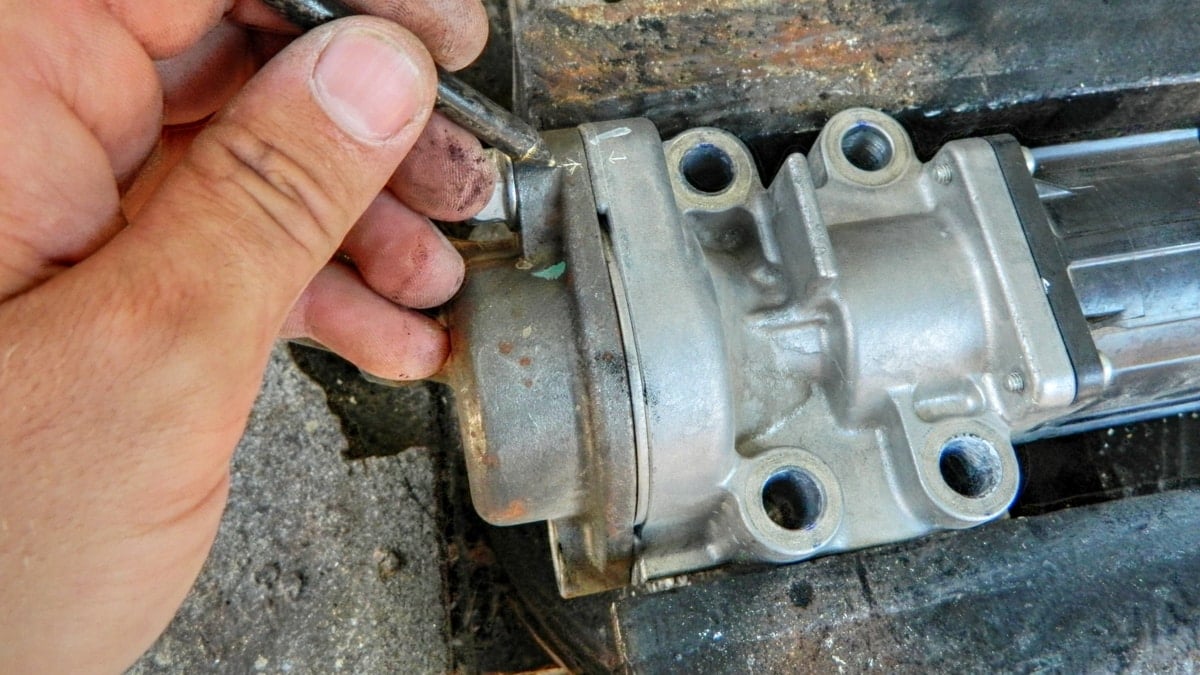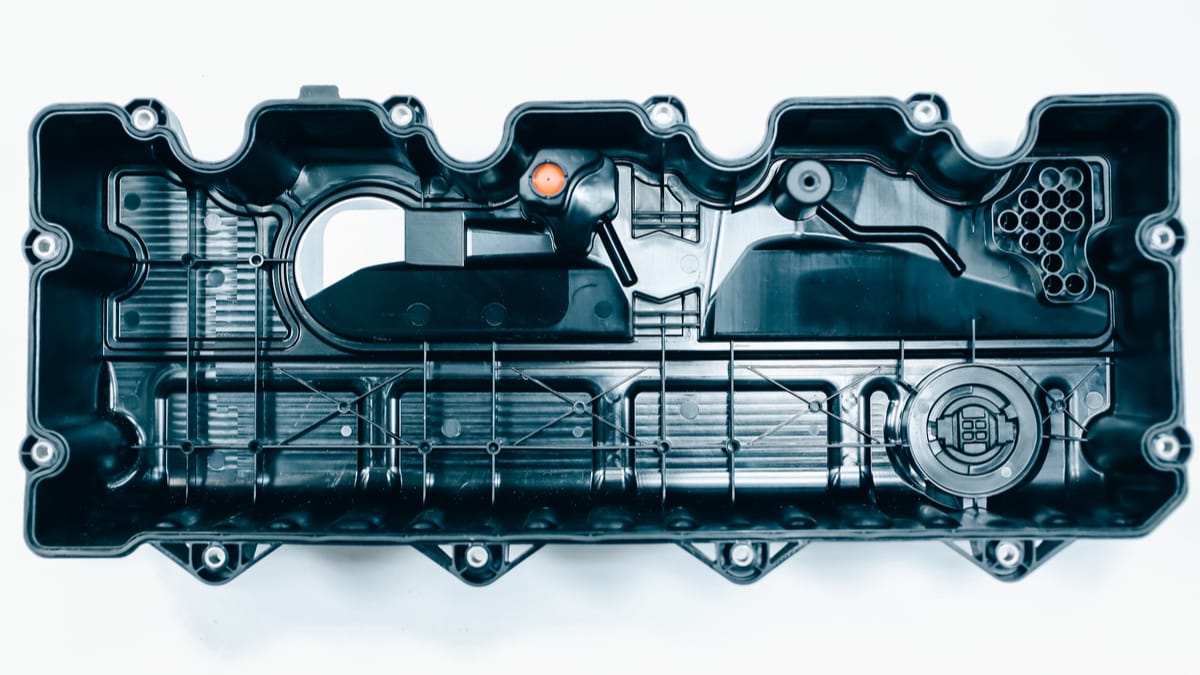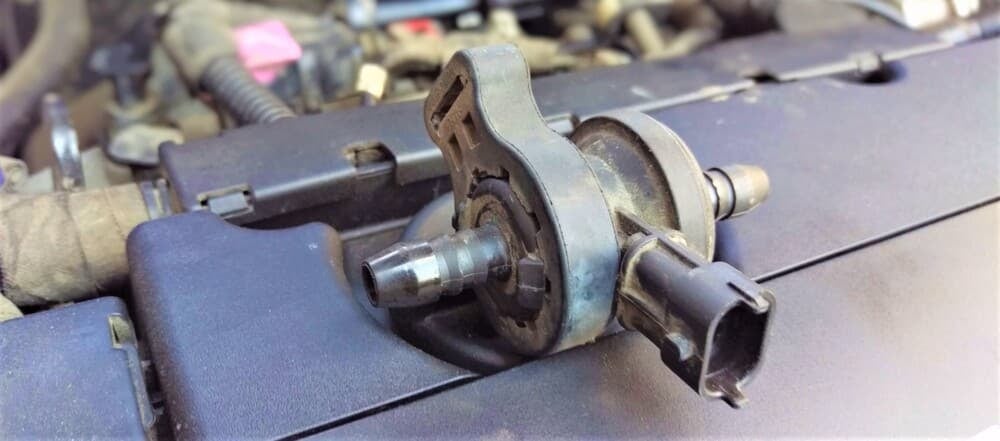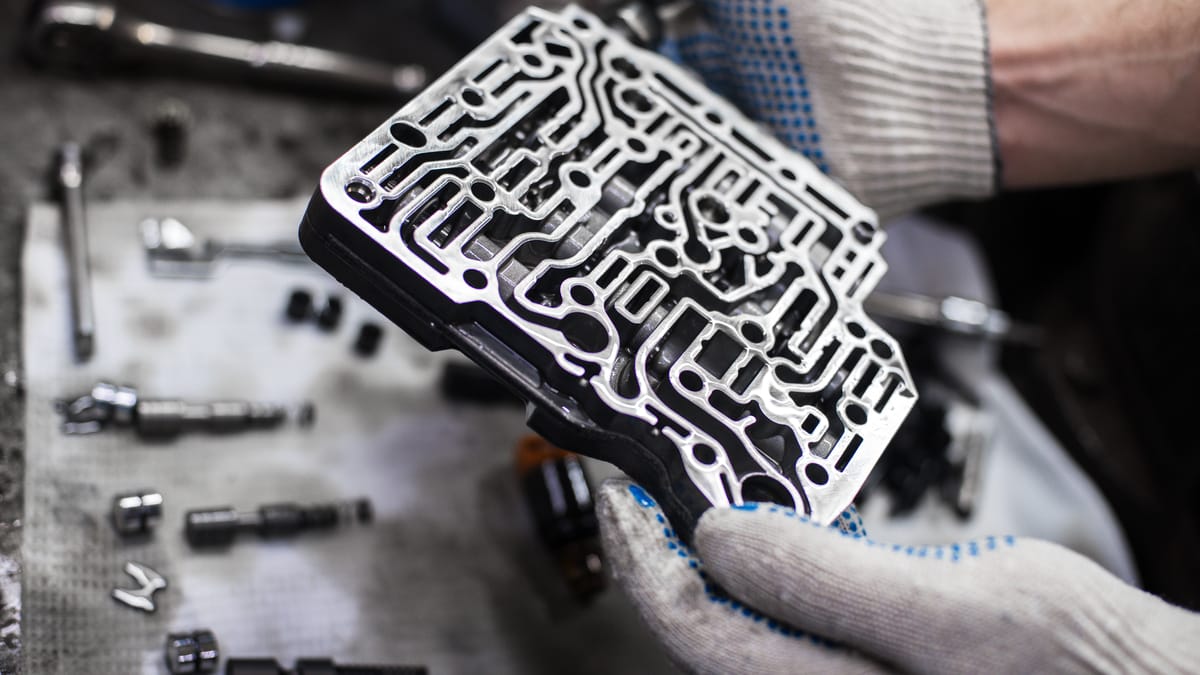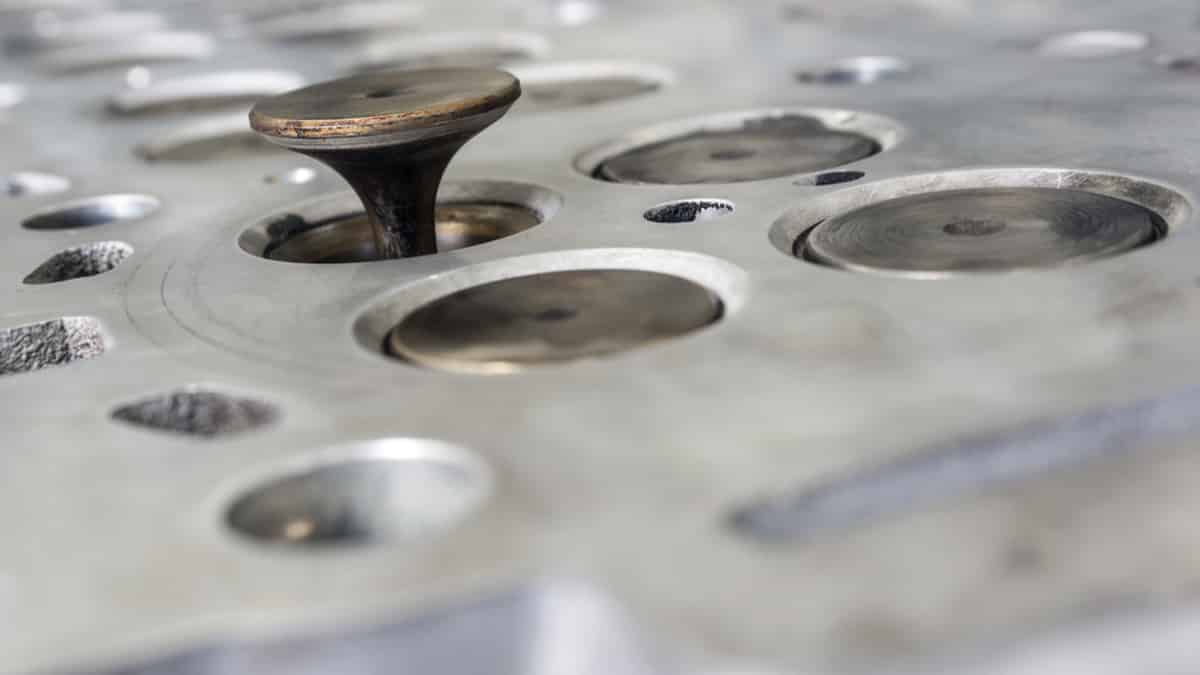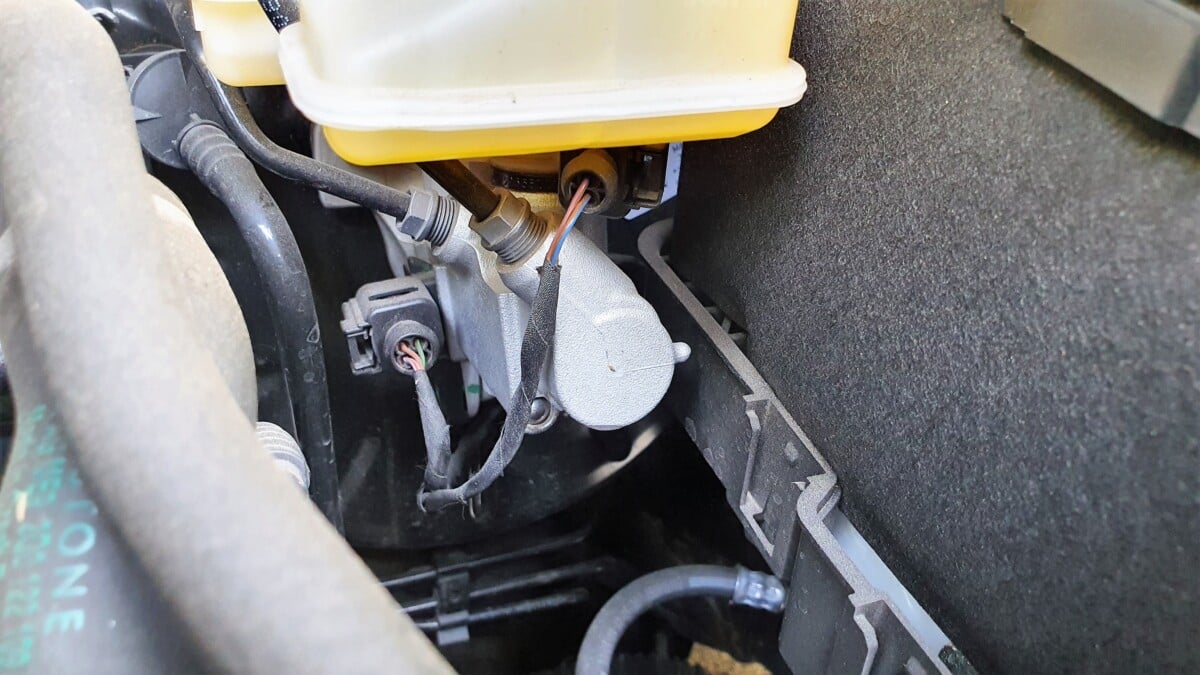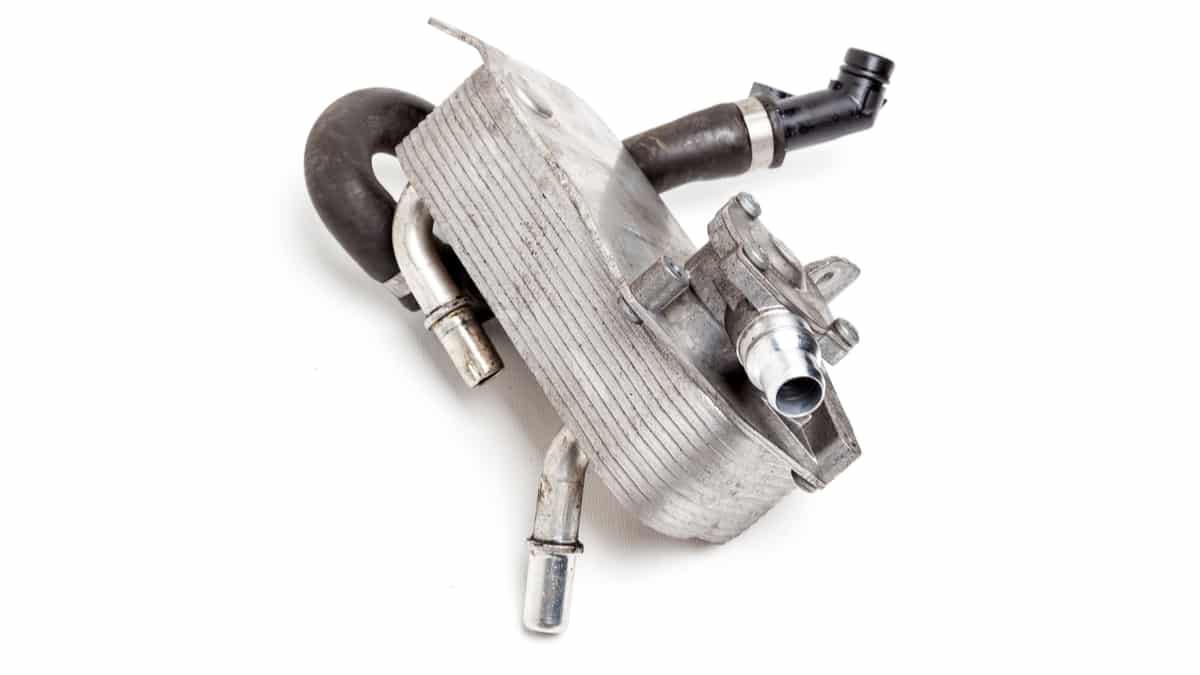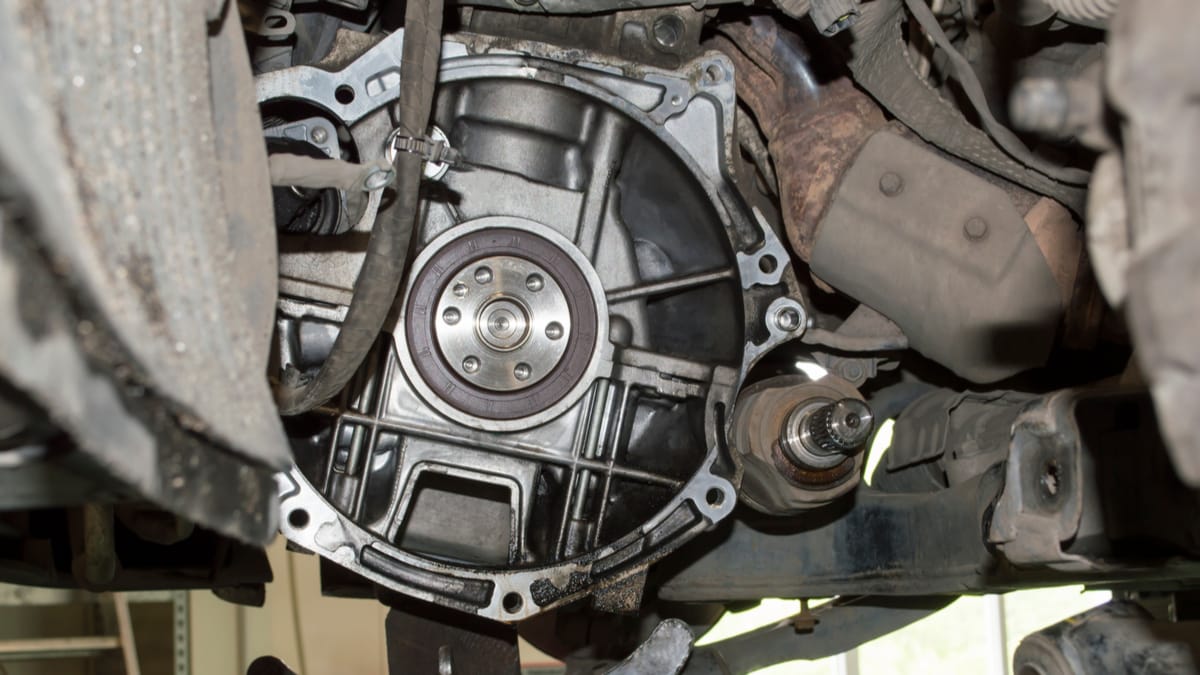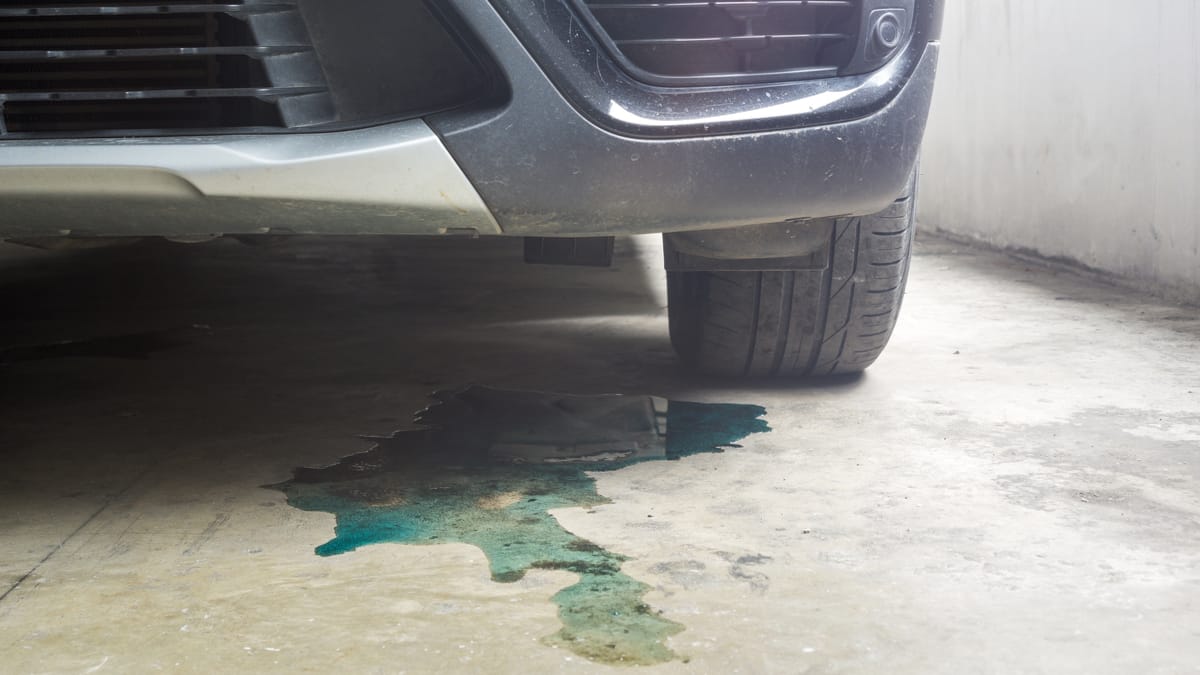Valve seals are responsible for keeping oil from leaking into the cylinders. If there’s a failing seal, combustion may not occur as it should. That’s why it’s important to know the symptoms of a bad valve seal before engine performance dramatically suffers.
This guide strives to reveal the top bad valve seal symptoms and discuss the purpose of these seals. We also look at the location of the valve seal, explain how to check it and show you what the replacement might cost. All of these come before an FAQ section that is designed to answer your top questions.
Symptoms Of A Bad Valve Seal
When a valve seal goes bad, you may see blue smoke coming from the exhaust. There may also be oil on the spark plugs or higher oil consumption. Furthermore, you may experience a rough idle, notice decreased engine performance or end up with a clogged catalytic converter.
Let’s dive deeper into these six possible failing valve seal symptoms.
1. Blue Smoke From Exhaust

Most commonly, blue smoke starts to come out of the exhaust pipe when a valve seal is bad. In fact, this is one symptom that can help determine if the valve seals are bad. Some people mistake the blue smoke for a grey color at first. Yet, after some time, you should start to see the bluish tint it has.
As the intake valve seal leaks, the engine consumes and burns more oil in the combustion chamber. An exhaust valve seal can also be leaking. This problem forces oil through the exhaust pipe, where it turns into a cloud of blue smoke. Over time, the blue smoke is going to get worse, especially while traveling at higher speeds.
It’s important to note that blue smoke simply means that the engine is burning oil. While valve seals are a common cause of this problem, it’s not the only thing that may be wrong. This blue smoke can also be caused by worn piston rings or bad PCV (Positive Crankcase Ventilation) valves. That’s why it’s important to run through some diagnostic steps listed below before concluding what may be the problem.
2. Oil On Spark Plugs
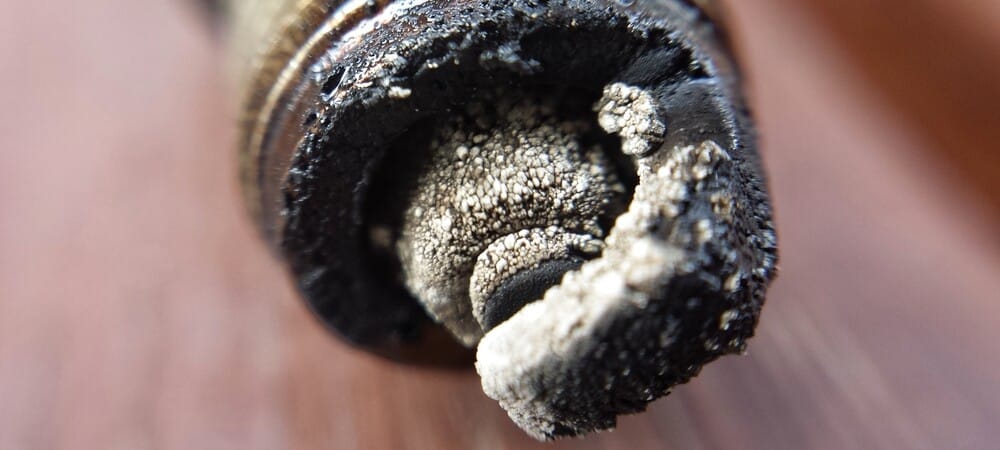
During a spark plug change, you might notice some oil on the tips. This problem indicates that oil made it through the combustion process and settled on the plugs. It could be coming from a leaking valve seal or a defective turbocharger.
As it burns on the spark plug, it turns into a clay-like substance and it remains there. Either way, you want to change the spark plugs, but not before you fix the underlying issue.
3. High Oil Consumption
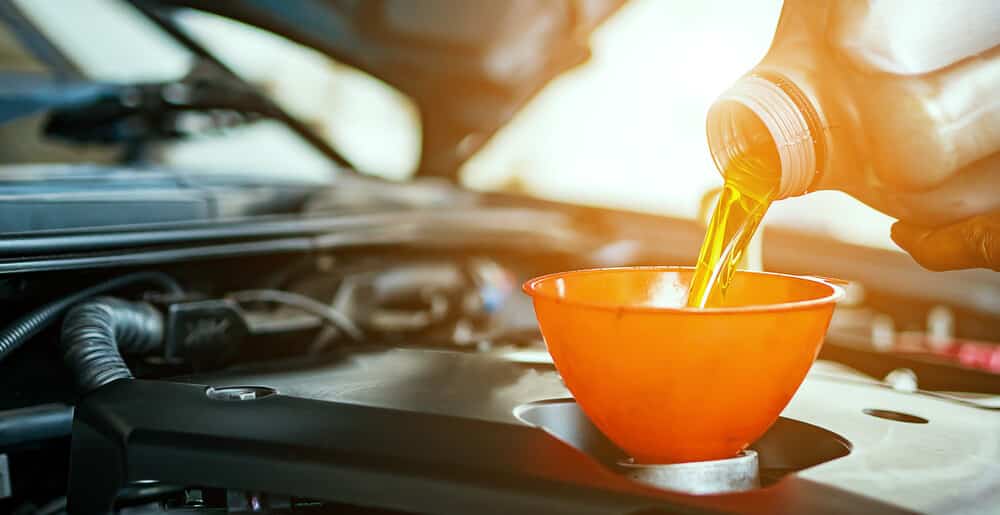
It’s not uncommon for some vehicles to use oil between changes. To determine how much oil consumption is normal, it’s helpful to look at guidance from the car manufacturer. For example, BMW suggests that its engines may burn a quart of oil every thousand miles. GM also states that normal consumption can be one quart every 2,000 miles. Yet other manufacturers remain silent on the situation.
Either way, if your vehicle has fewer than 50,000 miles on the odometer, you shouldn’t be going through more than a quart of oil between oil changes unless the automaker says something else. If you need to put oil in more frequently, you may have an issue with the valve seals. Yet, high oil consumption isn’t just a problem for bad valve seals. It can also be caused by defective worn valve guides or there may be an internal leak. That’s why oil consumption must be combined with other symptoms to determine whether the valve seals are to blame.
4. Rough Idle

There are several issues that can also lead to a rough idle. However, when a valve seal is defective, oil can make its way into the combustion chamber where it doesn’t belong.
This problem alters the air-fuel mixture and leads to a rough idle. It could get bad enough to stall the engine.
5. Decreased Engine Performance

There are many reasons that bad valve seals can affect engine performance. Not only can the valves become clogged with oil, dramatically affecting how the engine runs, but the spark plugs can also foul.
Additionally, the catalytic converter could get clogged since oil isn’t supposed to travel through this part. If you need to replace the catalytic converter, you are looking at a hefty repair bill.
This often happens because of the oil that is burning inside of the engine and the particles that the oil is releasing when it’s burning. They kind of stick to the catalytic converter instead of burning off.
6. Clogged or Damaged Catalytic Converter
The catalytic converter is designed to transform exhaust gases into something more acceptable to the environment. It was never created to burn oil coming through the exhaust. When the valve seals are bad, oil makes its way into the exhaust, where it ends up in the catalytic converter.
As a result, the catalytic converter can become clogged. This isn’t a problem that you need to worry about immediately, but it can occur if you allow the valve seals to keep leaking. After prolonged exposure to the oil, you may need to replace the catalytic converter, which can easily cost more than $1,000.
What Is A Valve Seal?
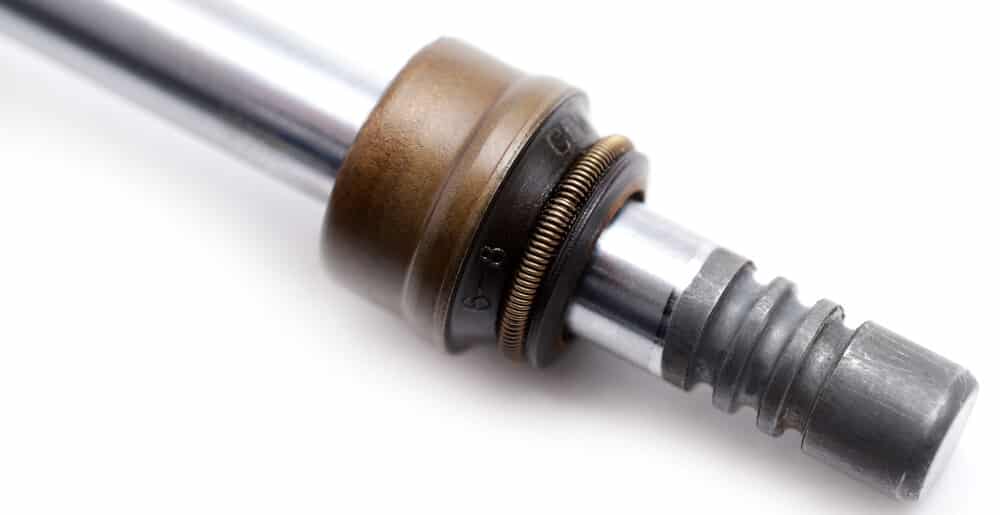
The valve seal is responsible for keeping the oil separated from the cylinder head and combustion chamber. Oil was never meant to be in the combustion chamber; only a mixture of air and fuel.
Valve seals are constructed from heat-resistant rubber that sits in a metallic outer ring. This material is placed against the valve to seal it securely. It’s not common for valve seals to go bad, especially when the engine is well-maintained, but it’s possible, especially on an older engine.
Where Are The Valve Seals Located?
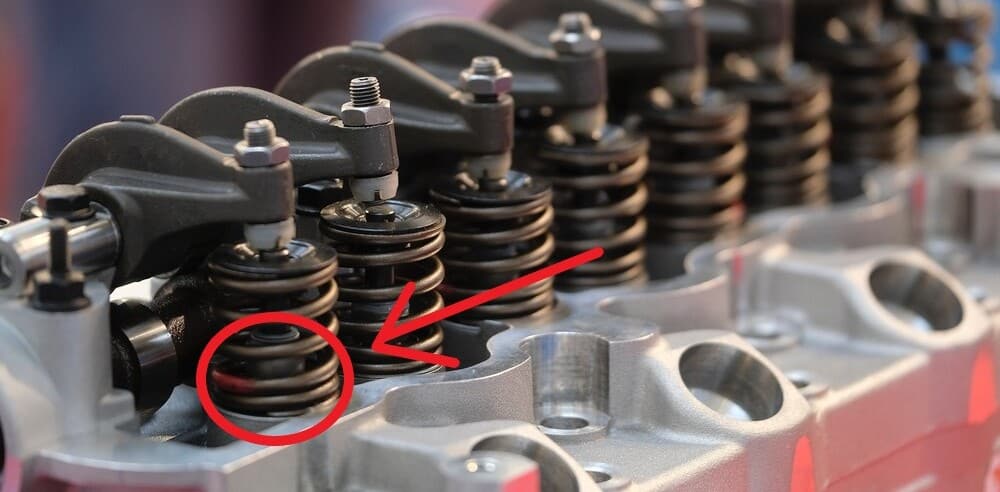
Valve seals are found in the cylinder head, securing each of the valves. You can find them under the valve springs.
Because of this location, you may need to remove the valve cover to get to the seals. You may also need to take off the valve springs.
How Do You Diagnose A Valve Seal?
The most important diagnostic tool that you have is to watch for the symptoms. It’s not easy to check the valve seals, so you want to piece the symptoms together like a puzzle. If you are experiencing blue smoke and other symptoms, it’s possible that the valve seals are bad.
There are some special ways to increase the symptoms if the valve seals are the problem. Here are two options to consider.
- Cold engine test: Let the vehicle sit overnight. There will be some leftover oil in the top of the head from the last time the engine was running. This oil will make its way past the valve seal if it’s bad. As a result, you would see a lot of blue smoke when you first start the car.
- Off-throttle/coasting test: Symptoms are going to appear more frequently when you are descending a downgrade and you are coasting. The high intake manifold vacuum combined with the engine’s downward slant will allow more oil to collect on the front of the valve cover. Therefore, if the oil gets past the valve seals, you will see more blue smoke.
If you aren’t sure how to determine if the valve seals are bad, it’s best to visit a professional mechanic for more support.
How Much Does It Cost To Replace A Valve Seal?
On average, the valve seal replacement cost could be between $250 and $2,000 if all of them need to be replaced. However, this price depends heavily on what type of car you drive and the local labor rates. If you prefer to do the job yourself, you will save a lot of money because most valve seals cost $50 to $100.
Still, this isn’t a job for beginners. To replace valve seals, the valve cover must be removed. You must also take out the valve springs to reach the seals. This process requires pressurizing the cylinder chamber. On the other hand, some models also require that the whole cylinder head be removed. Not only is this process time-consuming, but you could also cause more damage if you don’t know what you are doing.
Is it bad to drive with leaking valve seals?
Yes, with a valve seal leaking, oil can get into the combustion chamber. Not only does this create blue smoke from the exhaust, but it can also foul the spark plugs and lead to issues with engine performance. The idle could be rough and the engine could stall. If the oil gets too low, you may also damage the engine permanently.
How many miles do valve seals last?
In modern engines, the valve seals should last a minimum of 150,000 miles. To ensure the seals last as long as possible, it’s important to keep up with all recommended maintenance, including oil and filter changes. Older engines may need valve seals more frequently.
Is it worth it to replace valve seals?
It depends on how much your vehicle is worth. If replacing the valve seals is going to cost $2,000, but the car is only worth $1,250, you may be better off junking the vehicle. However, if you are going to get many more miles out of the car, you want to replace the valve seals to prevent engine damage.
How easy is it to replace valve seals?
It’s not an easy job on any car, but it can be especially difficult on some. At the very least, the valve cover must be removed. You may also need to take out the valve springs, which may require pressurizing the cylinder chamber. Also, there are some cars that must have the entire cylinder head removed to get to the seals. If you don’t know how to do this, it’s best to trust the professionals.
Can bad valve seals damage the engine?
Yes, if oil gets past the valve seals and enters the combustion chamber, it can cause damage. First, oil isn’t meant to be in the combustion chamber, so the air-fuel mixture is imbalanced and the spark plugs may get fouled. Additionally, as oil continues to leak, the levels may drop, which leaves the engine unprotected.
If you are facing a bad valve seal, you want to take action sooner rather than later. This isn’t a problem you want to continue ignoring, hoping it will go away. To protect the engine, spark plugs, catalytic converter and other valuable components, you want to have the defective seals replaced immediately. Yes, the cost of repair may be high, but it’s lower than what you will spend if the entire engine needs to be replaced or rebuilt.
Sadly, this isn’t normally a DIY job. Unless you have a well-equipped garage and you have the experience to do this repair, you should trust the professionals. There’s too much that can go wrong and it’s not worth the risk.
Categories: Engine
